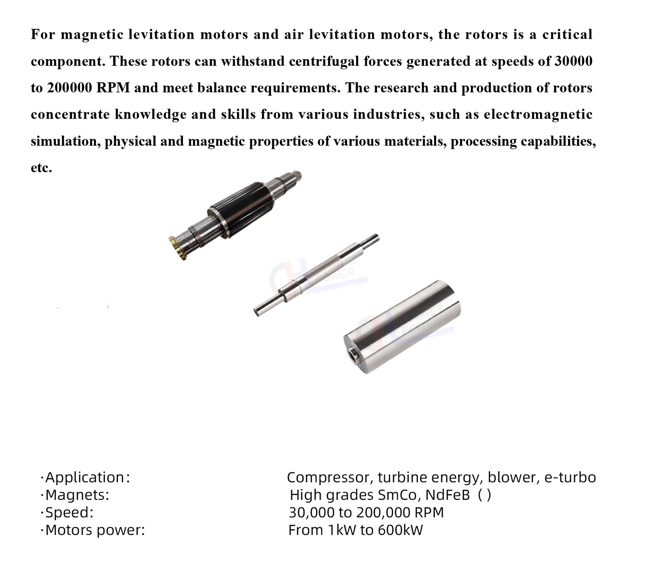High speed motor rotors are key components in the design and performance of high speed motors, particularly those operating at speeds exceeding 10,000 revolutions per minute (RPM). These rotors possess several distinct features that enable them to handle the rigors of high-speed operation efficiently and reliably.

First and foremost, high speed motor rotors are designed with precision to minimize rotating inertia. Lower inertia translates into faster acceleration and deceleration rates, making them ideal for applications requiring rapid dynamic responses. This also results in smaller motors that can generate comparable power to their larger, slower counterparts, thereby conserving materials and reducing overall weight and size.
High speed rotors often utilize advanced materials, such as ceramics or special alloys, which offer improved strength, heat resistance, and reduced mass. For instance, ceramic ball bearings used in high speed rotors can withstand the extreme centrifugal forces generated at high RPMs without excessive wear or failure. Additionally, the use of these materials allows for tighter tolerances and smoother surfaces, enhancing the overall efficiency and longevity of the motor.
Aerodynamics and fluid dynamics play a crucial role in the design of high speed motor rotors. Engineers must carefully consider how air or other fluids move around and through the rotor, as even minute differences in design can significantly impact cooling, noise generation, and power dissipation. Optimized air flow channels and vents can help keep the rotor cool and minimize power losses due to windage and friction.
High speed rotors also require sophisticated balancing techniques to ensure smooth and vibration-free operation. Unbalanced rotors can lead to excessive wear, premature failure, and reduced efficiency. Therefore, precision balancing methods, such as static and dynamic balancing, are employed to achieve near-perfect balance, minimizing vibrations and noise.


The rotor's electromagnetic design is equally important. High speed motors often rely on concentrated winding configurations to reduce copper losses and improve thermal management. Additionally, the rotor's magnetic circuit is optimized to generate maximum torque at high speeds, maximizing the motor's power output.
Safety considerations are paramount in the design of high speed motor rotors. Due to the high energies involved, safety mechanisms, such as thermal cutouts and overload protection, are often incorporated to prevent catastrophic failures. Additionally, the rotor's structural integrity is rigorously tested to ensure it can withstand the rigors of high-speed operation without compromising the motor's reliability.


In conclusion, high speed motor rotors possess a unique set of features that enable them to perform at speeds exceeding 10,000 RPM. Their low inertia, advanced materials, aerodynamic design, precise balancing, optimized electromagnetic configurations, and robust safety features all contribute to their high efficiency, reliability, and longevity. As the demand for high-speed motors continues to grow in various industries, research and development in these areas will continue to push the boundaries of what is possible with high speed motor rotors.






























